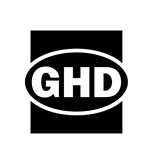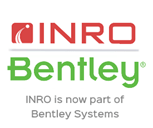Three Birds and A Stone - Three Tier Modelling in One Transport Model
Adnan Sheikh & Omer Khan
Connexus Transport Advisory, Queensland
This presentation was delivered at the 2021 Online Conference Series and until October 2022 is only available to registered delegates and Content Access Pass holders via Interchange. For information on accessing this and other presentations please review the Content Access Pass options.
Presentation Summary
The key issues that all transport models attempt to solve can be categorised into two areas: 1 - Demand forecasting – Predicting peoples’ travel choices and how they will use the transport system (more in the realm of ‘Econometrics’) and 2 - Transport Performance assessment – Predicting the performance of the transport infrastructure and services (more in the realm of ‘Transport Planning and Traffic Engineering’).
An ideal transport model would be a single model that can accurately forecast the travel demands for a large spatial area in a timely, less labour-intensive manner whilst considering dynamic real-life complex travel operations and intricacies. This has not been achievable in the past due to computational and often budgetary limitations. Transport modelling experts devised a three-tier framework over the last few decades to tackle this challenge. Whilst this three-tier approach addresses these issues by using the information from each tier, the transfer of information across the three-tiers of modelling generally requires significant time and cost and results in loss of significantly valuable information, e.g., classified person trips are typically aggregated into PCU’s and trips are redistributed into smaller zones etc.
This presentation showcases the Moreton Bay Integrated Transport Model (MITM) study, specifically the advantages of a streamlined and integrated three-tier transport model to tackle the challenges identified above.
Abstract
The value of any transport model comes from its ability to not only replicate existing travel behaviour, but also it’s ability to reliably forecast the future conditions whilst engage in an “Efficient Dialogue – i.e., timely model run times” that can continuously improve and refine our understanding of, and insights into, travel behaviour. The ideal situation would be a single model which can forecast the demands by covering large spatial extents, including the finest network operational details and behaviours, and provide meaningful insights in a time-effective way. The reality, however, is that it is not possible to achieve this with a single model given current computing and budgetary constraints. The transport modelling industry addressed this challenge by adopting a three-tier transport model, or three-and-a-half tier if hybrid transport modelling is considered.
For simplicity, this presentation references a three-tier transport model and a typical four-step demand model process.
The three-tier transport modelling framework addresses the challenges stated above by leveraging the strengths of each modelling tier (e.g., Tier 1 is typically used to inform the demands, Tier 2 improves the assignment by accounting for the network details and impedances, and Tier 3 includes more details and realistic operational details). However, it still results in the loss of potentially significant or valuable information (such as classified person trips aggregated into PCU’s). Furthermore, because this modelling process requires multiple handling of data and information with numerous simplified or crude assumptions, it often results in surprising outcomes, such as latent demands or excessive demands, when navigating from Tier 1 to Tier 3.
Key challenges associated with the three-tier transport framework are as follows – a more exhaustive comparison will be discussed in the presentation:
- Inconsistent details: The level of detail in each tier varies in nature (zonal resolution, road network details, impedance calculation methods etc.). A relationship between each model tiers is often achieved using simplified or crude assumptions.
- Varying data requirements: Tier 1 to 3 models are often built in different software, each requiring data in varying formats and requiring considerable resource and time expenditure and time.
- Loss of information/ lack of traceability: We often aggregate or disaggregate data and information when converting the information from one tier into another tier. For example, trips in Tier 1 models are estimated for each purpose and then are converted into more simplified demand matrices before being applied in Tier 2. The information is further adjusted in Tier 2, which eventually leads to loss of valuable information).
- Calibration/ validation efforts: The transition to each tier requires recalibration and revalidation as the level of detail differs in each tier. For example, if the Tier 1 model is calibrated, the Tier 2 model will have to be calibrated also as it is more refined. These processes are often very time consuming and resource-intensive.
- Workflow/ processes: Transferability and interoperability between different tiers requires significant time, cost, and efforts, increasing the likelihood of process errors due to the lack of a well-defined workflow.
This presentation attempts to address these challenges by presenting an efficient process of integrating and streamlining the three-tier transportation modelling workflow. The Moreton Bay Integrated Transport Model (MITM) is used as a case study for this purpose.
MITM is an integrated all-in-one, strategic to “simplified car following” microsimulation transport model, which includes Tiers 1 to 3 in a single model. MITM comprises a uniform and detailed process at the regional level, providing a consistent model structure (such as zone, link, node, and connectors etc.) and allows for more accurate and realistic feedback between trip distribution, mode choice and assignment phases. In addition, the entire model structure has been developed focusing on detail and efficiency, resulting in much lower calculation overheads and significantly superior detail than other currently available Tier 1 transport models.
The highly efficient model structure and workflow adopted for MITM results in significant time (and cost) savings by adopting an ‘all-in-one’ three-tier modelling philosophy. With one workflow, the entire process is fully transparent and allows organisations to better understand travel patterns at different levels of detail for network performance evaluation. In addition, MITM is a modularised transport model which includes a simplified Tier 3 traffic assignment model outside the four-step cycle. A simplified Tier 3 model uses a discrete car following module, covers the entire region, and can visualise the vehicles over a pre-defined time period within the entire network.
Author(s)
Adnan Sheikh | Connexus
Adnan Sheikh has 14 years of experience in transport modelling, data science, planning, engineering and economics in Australia and United Kingdom. Adnan is a very well respected strategic to operational transport modeller and data scientist with extensive programming and sophisticated data analytics skills using python, java, Lua, R, VBA, Power Bi, Tableau and Knime.
Currently, Adnan is a lead transport analyst and director at Connexus Transport Advisory, and he is leading several high-profile design infrastructures and regional planning-based projects in Queensland. Adnan is a passionate/ innovative transport analyst and always strives to deliver cutting edge, pragmatic, and inventive
Dr Omer Khan | Connexus
Dr Omer Khan is currently working as a Principal Transport Modeller at Connexus Transport Advisory in Brisbane. Connexus is an Australian-based planning and engineering consultancy specialising in providing innovative transport advisory services to public and private sectors. Omer’s primary role encompasses leading the transport modelling team, supervising and running the project work in traffic modelling and planning areas, and managing clients’ requirements to produce satisfactory project outcomes.
Before joining Connexus, Omer gained experience working in various roles with multi-national organisations such as Arcadis, Arup, Aurecon and AECOM.








